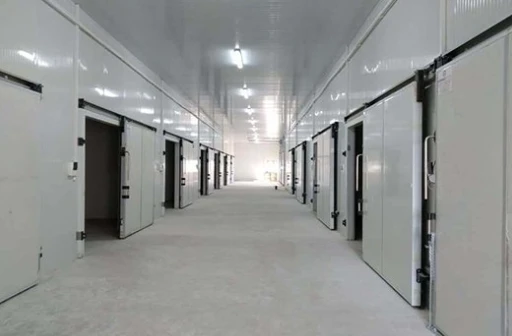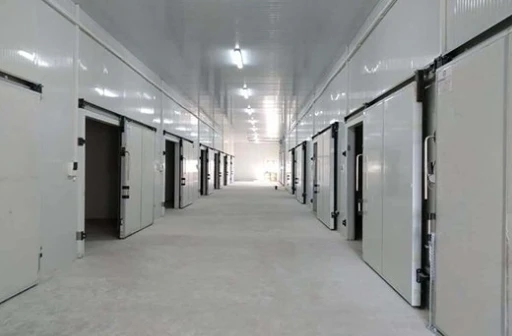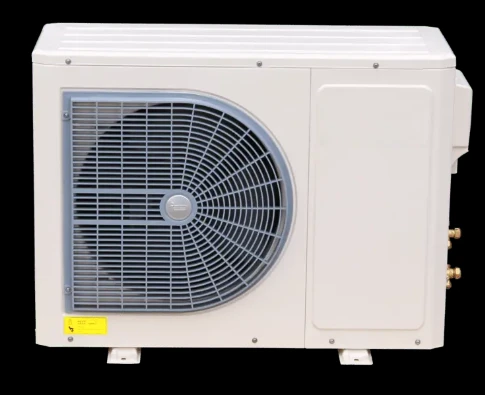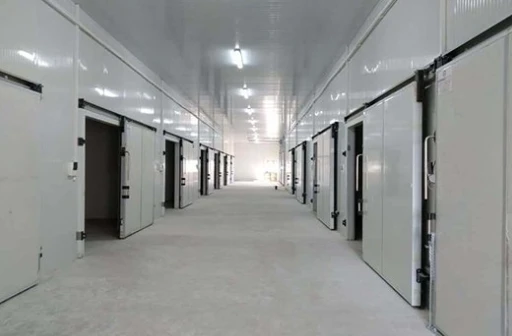Cold Room Doors for Sale - High-Quality & Energy-Efficient Solutions
Navigating the Landscape of Cold Room Door Technology and Market Trends
The demand for robust and energy-efficient cold storage solutions is expanding across diverse industrial sectors. Central to these controlled environments are cold room doors for sale, which play a critical role in maintaining stringent temperature regimes, optimizing operational efficiency, and ensuring product integrity. Industry trends indicate a strong shift towards advanced insulation materials, smart automation features, and enhanced durability to meet the evolving demands of modern logistics, food processing, and pharmaceutical industries. Innovations in sealing technologies and heating elements are also crucial for minimizing thermal bridges and preventing ice formation, particularly in extreme low-temperature applications such as warehouse freezer doors.
The market for cold room door solutions is being driven by several factors, including the globalization of cold chains, stricter food safety regulations, and the expansion of e-commerce for perishable goods. Furthermore, the increasing focus on sustainability and energy conservation compels manufacturers to develop doors with superior thermal performance, reducing energy consumption and operational costs for businesses. This pushes the boundaries for cold room doors manufacturers to innovate constantly.
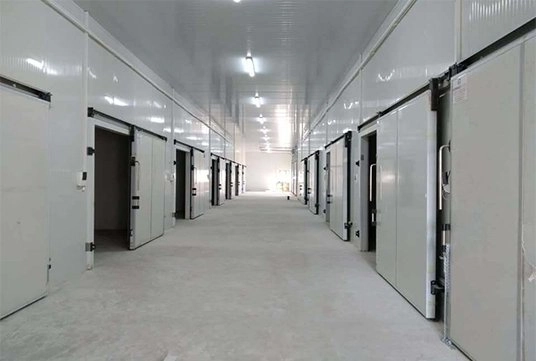
Advanced Technical Specifications and Performance Parameters
The engineering of a high-performance cold room door involves meticulous attention to several critical technical specifications to ensure optimal thermal efficiency, durability, and operational reliability. Key components include the door panel, frame, sealing system, heating elements, and hardware.
- Panel Construction: Typically comprises a rigid polyurethane (PU) or polyisocyanurate (PIR) foam core injected between pre-painted galvanized steel, stainless steel, or aluminum sheets. Insulation thickness can range from 80mm for chiller rooms to 200mm for deep freezer applications. PIR offers enhanced fire resistance compared to standard PU.
- Thermal Conductivity (K-value): A crucial parameter, indicating the material's ability to conduct heat. High-quality insulation materials achieve K-values as low as 0.022 W/(m·K), significantly reducing heat ingress.
- Frame and Casing: Constructed from reinforced aluminum or stainless steel, designed to accommodate electric heating cables (trace heating) to prevent ice build-up around the perimeter, which can compromise the seal.
- Sealing System: Multi-layered EPDM or PVC gaskets ensure an airtight seal, preventing energy loss and condensation. Double-lip or triple-lip gasket designs are common for freezer doors.
- Hardware: Heavy-duty hinges, latches, and sliding mechanisms (e.g., track systems for sliding doors) are typically made from stainless steel or composite materials for corrosion resistance and longevity. Emergency release mechanisms are standard safety features.
- Operating Temperature Range: Doors are specified for various ranges, e.g., 0°C to +15°C for chillers, -18°C to 0°C for freezers, and down to -40°C or even -60°C for blast freezers.
Typical Cold Room Door Specifications
| Parameter | Specification (Typical) |
|---|---|
| Panel Core Material | High-Density Polyurethane (PU) or Polyisocyanurate (PIR) Foam |
| Panel Skin Material | Food-Grade Stainless Steel (AISI 304/316), Pre-painted Galvanized Steel, Aluminum |
| Insulation Thickness | 80mm - 200mm (Application Dependent) |
| Thermal Conductivity (K-value) | ~0.022 W/(m·K) |
| Operating Temperature | -60°C to +15°C |
| Door Type Options | Hinged, Sliding (Manual/Automatic), Swing, Vertical Lift |
| Frame Heating | Low-Wattage Electric Heater (for freezer doors) |
| Sealing Gaskets | Replaceable EPDM/PVC, Double or Triple-Lip Design |
| Safety Features | Internal Emergency Release, Finger Safety Edge (Automatic Doors) |

The Precision Manufacturing Process of Cold Room Doors
The creation of reliable cold room doors for sale is a multi-stage process, meticulously engineered to ensure the highest standards of thermal performance, structural integrity, and longevity. Our manufacturing philosophy emphasizes precision, material quality, and rigorous testing.
Manufacturing Process Flow:
1. Material Selection & Preparation
High-grade stainless steel (e.g., AISI 304/316 for corrosive environments) or pre-painted galvanized steel sheets are selected. Insulation materials, primarily rigid PU or PIR foam, are sourced from certified suppliers. Frames are extruded from aluminum alloys or fabricated from stainless steel using precise cutting and bending techniques, including CNC machining for intricate components.
2. Panel Foaming/Pressing
The chosen skin materials are prepared, and polyurethane or polyisocyanurate foam is injected or pressed between them under controlled conditions. This ensures uniform density and adhesion, crucial for maintaining optimal thermal insulation properties and structural rigidity. The process adheres to strict quality control to prevent voids or delamination.
3. Frame Fabrication & Heater Integration
Door frames undergo precision fabrication. For freezer doors, low-wattage electric heating cables are carefully integrated within the frame profile. This process demands high accuracy to ensure effective frost prevention without compromising structural integrity or electrical safety. Welding and assembly processes are carried out by certified technicians.
4. Hardware & Sealing Assembly
Heavy-duty hinges, robust latches, and sliding mechanisms are installed. The multi-lip EPDM/PVC gaskets are meticulously fitted along the door perimeter, ensuring a tight, energy-efficient seal. Emergency release handles and other safety features are integrated at this stage.
5. Quality Control & Testing
Every door undergoes stringent quality control. This includes thermal performance testing (e.g., air leakage tests, K-value verification), mechanical endurance testing for hardware, electrical safety checks (for heated doors), and dimensional accuracy verification. Compliance with international standards such as ISO 9001 and ANSI is a mandatory step.
6. Packaging & Dispatch
Finished doors are carefully packaged to prevent damage during transit, ensuring they arrive at the client's site in pristine condition. Specialized packaging for international shipping adheres to global logistics standards.
This rigorous process ensures a typical service life exceeding 15 years for our chiller room door and freezer door solutions, even under demanding industrial conditions.

Application Scenarios and Strategic Advantages
The versatility and high performance of modern cold room door systems make them indispensable across a broad spectrum of industries. These applications demand specialized features to ensure operational continuity, product safety, and cost efficiency.
Target Industries:
- Food & Beverage: From processing plants and abattoirs to large-scale distribution centers and supermarkets, cold room doors are vital for preserving perishables, adhering to HACCP standards, and managing diverse temperature zones (e.g., chillers for dairy, freezers for meat).
- Pharmaceuticals & Biotechnology: Maintaining precise temperature control for vaccines, sensitive drugs, and biological samples is critical. Doors for these environments often feature non-porous surfaces and enhanced sealing for aseptic conditions, typically regulated by FDA guidelines.
- Logistics & Warehousing: Large warehouse freezer doors and cold storage facilities rely on automated sliding doors for high-traffic areas, facilitating rapid movement of goods while minimizing thermal loss.
- Chemical & Petrochemical: Certain chemicals require refrigerated storage to prevent degradation or ensure safety. Doors in these sectors may need additional corrosion resistance and ATEX certification for hazardous zones.
- Water Supply & Drainage (Laboratories): Laboratories dealing with sensitive samples or requiring low-temperature testing often utilize specialized cold rooms with precisely engineered doors.
Key Technical Advantages:
- Superior Energy Saving: High-density insulation, multi-lip gaskets, and effective frame heating systems significantly reduce heat transfer, lowering refrigeration loads and operational energy costs. Studies show that well-designed cold room doors can reduce energy loss by up to 25% compared to conventional doors.
- Enhanced Corrosion Resistance: Stainless steel finishes and specialized coatings protect against harsh cleaning agents, moisture, and corrosive environments, ensuring longevity and hygiene. This is particularly crucial in food processing where frequent washdowns are necessary.
- Optimal Hygiene & Sanitation: Smooth, non-porous surfaces and flush designs prevent microbial growth and facilitate easy cleaning, meeting stringent sanitation requirements for food and pharmaceutical industries.
- Robust Durability: Heavy-duty hardware, reinforced frames, and impact-resistant panels ensure that doors withstand constant traffic and potential impacts, minimizing maintenance and downtime.
- Operational Efficiency: Automated sliding or high-speed rapid roll-up doors enable quick access, reducing door open times and minimizing temperature fluctuations, which contributes to overall facility efficiency.
- Safety Features: All doors are equipped with essential safety features, including internal emergency releases, anti-finger trap designs, and optional safety sensors for automatic models, ensuring personnel safety.

Vendor Comparison and Customized Solutions for Cold Room Doors
When sourcing cold room doors for sale, B2B decision-makers must consider not only initial cost but also long-term operational efficiency, reliability, and support. A thorough vendor comparison is essential.
Key Considerations for Vendor Selection:
| Criterion | Importance & Details |
|---|---|
| Product Quality & Certifications | Look for ISO 9001, CE marking, and compliance with industry standards (e.g., HACCP for food, FDA for pharma). Material traceability and robust build quality are paramount. |
| Thermal Performance | Evaluate K-values, insulation thickness, and efficacy of heating elements. Request performance data and energy efficiency ratings. |
| Customization Capabilities | The ability to tailor dimensions, materials, finishes, automation levels, and safety features to specific site requirements is crucial. |
| After-Sales Support & Warranty | Comprehensive warranty, availability of spare parts, technical support, and installation/maintenance services are vital for long-term operational peace of mind. |
| Lead Time & Logistics | Evaluate typical lead times, delivery reliability, and global shipping capabilities, especially for large projects or urgent replacements. |
| Industry Reputation & Experience | Assess years in business, client testimonials, and portfolio of similar projects. This provides insight into reliability and expertise as cold room doors manufacturers. |
Tailored Solutions for Unique Requirements:
Recognizing that no two cold storage facilities are identical, leading cold room doors manufacturers offer extensive customization options. This ensures that the door perfectly integrates with existing infrastructure and operational workflows. Customization can include:
- Dimensions & Configurations: Made-to-measure doors, including extra-wide or extra-tall options for specialized equipment or high-volume traffic. Options include single-leaf, double-leaf, hinged, sliding, and vertical lift doors.
- Surface Finishes: Beyond standard stainless steel, options like anti-bacterial coatings, heavy-duty PVC, or specialized composites for specific chemical resistance or aesthetic requirements.
- Automation & Access Control: Integration with facility management systems, proximity sensors, remote controls, card readers, or biometric access for enhanced security and operational efficiency. High-speed automatic sliding doors are frequently customized for specific opening/closing cycle times.
- Vision Panels & Kick Plates: Addition of reinforced vision panels for improved visibility and safety, or durable kick plates to protect against impact damage in high-traffic zones.
- Specialized Hardware: Explosion-proof components for hazardous environments, magnetic seals, or specialized locking mechanisms.

Application Case Studies: Real-World Impact of High-Performance Cold Room Doors
The tangible benefits of investing in quality cold room doors for sale are best illustrated through real-world applications. These case studies highlight how superior design and engineering translate into measurable operational improvements and cost savings.
Case Study 1: Large-Scale Food Distribution Center
A major food distribution center with high traffic volume (over 500 forklift movements per day) faced significant energy losses and frequent maintenance issues with their existing warehouse freezer doors. Their previous doors lacked adequate insulation and robust hardware, leading to ice buildup and seal degradation.
Solution Implemented: Installation of 10 automated, high-speed sliding cold room doors with 150mm PIR insulation, integrated frame heating, and heavy-duty stainless steel track systems. Custom safety sensors were included to prevent collisions.
Results:
- Energy Savings: Achieved a 28% reduction in refrigeration energy consumption within the first year, attributed to minimized thermal transfer and reduced door open times.
- Reduced Downtime: Maintenance incidents for door-related issues decreased by 70%, significantly improving operational uptime.
- Improved Safety: Automated features and sensors led to a marked decrease in minor workplace incidents related to door operation.
Case Study 2: Pharmaceutical Research Laboratory
A pharmaceutical research facility required a new chiller room door for a temperature-controlled lab storing sensitive biological samples at a consistent +4°C. The primary challenges were maintaining aseptic conditions, precise temperature stability, and a reliable emergency exit.
Solution Implemented: A custom-designed hinged cold room door with a seamless AISI 316 stainless steel finish, specifically chosen for its superior corrosion resistance and ease of sterilization. It featured a high-grade EPDM double-lip gasket system and a pressure equalization port. An internal emergency release handle meeting pharmaceutical safety standards was integrated.
Results:
- Temperature Stability: Achieved minimal temperature fluctuations, typically less than ±0.5°C, crucial for sample integrity.
- Hygiene Compliance: The smooth, durable surface enabled easy cleaning and sterilization, meeting stringent FDA-compliant laboratory hygiene protocols.
- Reliability: The robust construction and precise sealing eliminated condensation and ice buildup, ensuring consistent performance.
Trustworthiness & Comprehensive Support
Choosing the right provider for cold room doors for sale extends beyond product specifications; it encompasses the complete lifecycle of support, from initial consultation to after-sales service. We prioritize transparency and reliability to build lasting partnerships.
Frequently Asked Questions (FAQ):
Q: What is the average lead time for a custom cold room door?
A: Standard cold room doors typically have a lead time of 2-4 weeks. For highly customized solutions, this can extend to 4-8 weeks, depending on material availability and complexity. We provide an estimated lead time with every quotation.
Q: What warranty is provided with your cold room doors?
A: All our cold room doors come with a standard 12-month warranty covering manufacturing defects. Extended warranty options are available upon request. Specific details are outlined in our sales agreement.
Q: Do you offer installation and maintenance services?
A: While we primarily focus on manufacturing and supply, we can recommend certified installation partners in various regions. We also provide detailed installation guides and offer technical support for maintenance and troubleshooting. Annual maintenance contracts can be arranged.
Q: How do your doors address energy efficiency?
A: Our doors are engineered with high-density polyurethane (PU) or polyisocyanurate (PIR) insulation, multi-chamber sealing gaskets, and thermally broken frames. For freezer applications, heated frames prevent frost buildup, all contributing to significantly reduced heat ingress and substantial energy savings.
Lead Time & Fulfillment:
Our streamlined manufacturing processes enable efficient fulfillment, with typical lead times communicated clearly at the quotation stage. We work closely with clients to meet project deadlines and can accommodate expedited orders for urgent requirements. Our logistics team coordinates global shipping, ensuring secure and timely delivery to your site.
Warranty & Customer Support:
We stand behind the quality and performance of our products with a robust warranty program. Our dedicated customer support team is available to assist with technical queries, spare parts, and troubleshooting. We believe in proactive support to maximize your investment's operational lifespan and minimize any potential disruptions.
Conclusion: Strategic Investment in Cold Chain Integrity
The selection and implementation of high-quality cold room doors are not merely procurement decisions; they are strategic investments in operational efficiency, energy conservation, product safety, and overall cold chain integrity. By understanding the intricate technical specifications, rigorous manufacturing processes, and diverse application advantages, businesses can make informed choices that yield significant long-term benefits. Partnering with a reputable manufacturer committed to quality, customization, and comprehensive support ensures that your cold storage infrastructure remains robust, efficient, and compliant with evolving industry standards.
References:
- ISO 9001:2015 Quality Management Systems – Requirements. International Organization for Standardization.
- ASHRAE Handbook—Refrigeration (I-P Edition). American Society of Heating, Refrigerating and Air-Conditioning Engineers.
- "Energy Efficiency in Refrigerated Warehouses." U.S. Department of Energy, Energy Efficiency & Renewable Energy.
- Food and Drug Administration (FDA) Regulations for Cold Storage. United States Government Publishing Office.



